The University of Michigan’s Ross School of Business recently celebrated 25 years of Multidisciplinary Action Projects (MAPs), an action-based learning course for first-year MBA students who receive guidance from faculty advisers. During that span, 10,438 full-time MBA students have worked on 2,010 projects in 92 countries with 1,352 sponsor companies. In recent years, executive, evening and weekend MBA students have participated in MAPs as well.
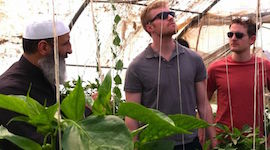
WDI began sponsoring international MAP projects for Ross in 1992, the year after they began, and have funded and provided faculty advisers for about 225 projects in the 24 years since. WDI President Paul Clyde said MAPs are “one of many tools available to pursue our mission” to develop knowledge and capability that improves the effectiveness of firms and social welfare in emerging economies.
“We’re using it in specific initiatives as a way of building relationships and developing solutions in the field with our partners,” he said. “For us, MAPs aren’t an isolated event, they are part of a longer-term relationship.”
WDI Senior Research Fellow Ted London said MAPs not only benefit students and sponsoring organizations, but also faculty members who advise the projects. It is a valuable way to keep in touch with multiple organizations, understand their latest successes and roadblocks, and think more broadly about solutions.
“I enjoy MAP so much, in part, because it gives me the opportunity to listen and learn,” said London, who also is vice president of WDI’s Scaling Impact Initiative. “These are often organizations we have worked with for many years and it’s great to have another reason for a frank and in-depth engagement.”
Each MAP project requires analytical rigor, critical thinking, and teamwork from the students. Teams of 4-6 students spend seven weeks exclusively working on their MAP projects, including 3-4 weeks in the field. Sponsors receive top-notch deliverables and data-driven recommendations from the team.
After learning about their projects and conducting research in the classroom for several weeks, the students then spend three to four weeks working alongside their project sponsors in the field.
Clyde, who served as an adviser to his first MAP team in 1998 while on the faculty at Ross, said the student projects are a “fun way to teach.”
“Something always comes up that’s an illustration of a point made in their core courses,” he said. “I distinctly remember times when you could see the lightbulb go off and they suddenly understood the concept because they were in that setting, they were living it in the field.”
WDI’s Education Initiative recently began deploying MAP teams to help further its mission of identifying and sharing new ways to enhance management education in emerging markets. This past winter, two MAP teams worked on entrepreneurship projects in Kosovo and Morocco, and one team examined e-learning at a major technical university in Georgia.
“MAP teams allow us to offer our education partners in-depth strategic guidance and for us to be able to consolidate learnings across projects and thereby identify needs, trends, and best practices in management education,” said Amy Gillett, vice president of the Education Initiative. “The projects we’ve sourced related to entrepreneurship education are helping us develop new models and tools to share with a global audience through WDI’s new Entrepreneurship Development Center for emerging markets.”
London, who has been a faculty adviser to about 50 student teams since joining WDI in 2004, called MAPs a “virtuous cycle” that benefits students, WDI’s partners, and the institute’s research.
MAPs embed students with an organization, whether it’s a nonprofit or a corporation, and apply what they have learned in school to help solve an issue the organization is facing.
“They’re solving real problems and understanding the context,” London said “They’re on the ground 3-5 weeks so they have a chance to get acclimated and then really get engaged.”
Clyde said MAPs also are an opportunity for students “to learn how to work in a team setting, to test out their leadership skills, and learn about other cultures.”
Benefitting Organizations, Influencing Students
Allie Schachter was a member of a MAP team that worked with a company interested in rolling out an active learning platform in an emerging market context. Managed by WDI’s Education Initiative, Schachter and her team embedded with the Stockholm School of Economics in Riga, Latvia. Schachter said she enjoyed applying what she had learned in the classroom to a real-world business problem. (Watch a video of Schachter talking about the MAP project below).
“My MAP experience solidified and contextualized many of the concepts discussed in class, which was an incomparable educational experience,” she said. “It was a great opportunity to work with a group on a very large and involved project. Throughout the course of our project, we honed our ability to work together, delegated tasks to one another, and navigated difficult conversations and challenges together.
“It was a really great opportunity to gain experience working for and with others. I will certainly carry those experiences forward when working with teams at work and in future classes.”
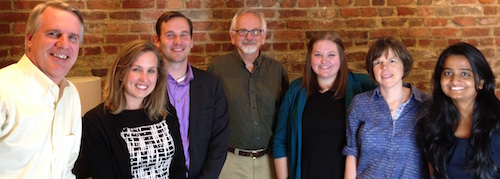
Perry Samson, center, poses with WDI President Paul Clyde, left, WDI Vice President of the Education Initiative Amy Gillett, second from right, and MAP team members.
Perry Samson, the Arthur Thurnau Professor in the Department of Atmospheric, Oceanic, and Space Sciences at the University of Michigan, developed the learning platform and enjoyed working with the MAP students to see how his product performed in an international setting. He called it “invigorating” and a “wonderful interaction” with the students, who were “thinking more deeply about all these things.”
“They thought of a number of things I didn’t think of,” he said. “They provided good insight on what drives adoption of technology in education and identified a number of suggested process changes.”
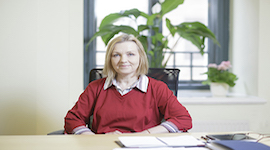
Diana Pauna
Diana Pauna, former pro-rector of the Stockholm School of Economics in Riga, found the project very useful for her university. She and her colleagues and students valued the opportunity to interact with a highly engaged team of MBA students from the University of Michigan.
“The project was extremely successful and a good learning experience for us,” she said.
London said because the MAPs are sourced with WDI partners, he and others are able to structure a good project that challenges students and benefits the organization.
“MAPs are of real value to the partners,” he said. “They do come back year after year. It’s a pressing issue they’re very keen to solve. Generally they have great outputs and create a substantial amount for the partners. That’s the reason we have a lot of repeats over the years.”
London and Clyde said MAPs can impact organizations for years to come, and can be life changing for students. London said MAP projects give students “an opportunity to see how the majority of the world lives and transacts, and it is something I believe they will carry with them the rest of their lives.”
He said one of the pleasures he gets from traveling with the students is watching them grow from the experience. Some students are committed to working internationally after graduation and have already traveled overseas. But others who will likely live and work in the U.S. when their MBA studies are complete still want to work internationally at least once.
“This isn’t what they are going to do with their life but it is something they want to experience,” London said. “We take them places and expose them to things they might not necessarily ever be exposed to. When we’re in Uganda, we’re not necessarily staying in the capital city. When we’re in Benin, we’re out in the bush.
“You can see the trepidation in some of them before they leave, and a sense of confidence when they get back,” he said. “And a whole new awareness of this world.”
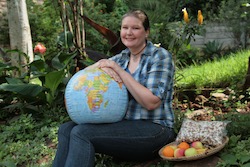
Former WDI MAP team member and WDI summer intern Patricia Griffin.
One student whose MAP experience changed her career path was Patricia Griffin, who was certain she would work for a U.S. automaker in a domestic car plant after getting her MBA. But she decided to join a WDI-sponsored MAP team headed by Clyde and that would work with a Uganda hospital.
Clyde remembers the team functioned without electricity for the first two weeks of its four-week stay. He said it was tough on the team but Griffin was energized by her experience and instead of heading to the auto plant now lives and works full time in Kenya.
“Questioning my assumptions and taking nothing for granted has become a basic mode of operation for how I conduct my career and life,” Griffin said of her time in Uganda. “That’s a direct result of the MAP experience.”
Amy Gillett, vice president of WDI’s Education Initiative, visited Cuba last month to assess how the Institute could assist the country’s burgeoning entrepreneur community. She shares her experience meeting entrepreneurs on the ground.
In a first for WDI, two managers visited Cuba last month to assess how the Institute could assist the country’s burgeoning entrepreneur community.
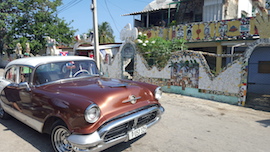
Amy Gillett, vice president of the Education Initiative, and Diana Paez-Cook, senior program manager of the Grants Management team, were part of a 20-person delegation that traveled to the island nation in May as part of a culture and policy trip organized by the travel company Insider Expeditions. Many on the trip were lawyers, policy development professionals, and lobbyists who hoped to learn more about Cuba’s economic transition.
That transition is slowly developing in the wake of renewed diplomatic ties between Cuba and the United States, and President Barack Obama’s historic trip to Havana in March. While it still operates a largely state-controlled economic system, the Cuban government has begun to make changes by permitting more of its citizens to operate private businesses.
WDI was founded in 1992 shortly after the collapse of communism in the Soviet Union as a way to help firms and organizations in formerly closed economies transition to a more free market economy. Cuba is viewed as the last of the Soviet bloc countries to transition to a more open economy.
Over the years, WDI has provided entrepreneurship training in Morocco, Rwanda, and Bahrain, and delivered business education training workshops to thousands of managers in former Soviet bloc countries.
Paez-Cook said the visit she and Gillett made to Cuba was invaluable because of the knowledge gained about the current situation on the ground and the connections made during the visit. She said the pair has a much better understanding of Cuba, which is “its own unique universe.”
While WDI typically works in partnership with local organizations to provide entrepreneurship training and other programs, the current system in Cuba has prevented the development of an organized civil society. A traditional approach of seeking out a partnership with an NGO will therefore not be viable at this time. Instead, Paez-Cook said WDI would need to cultivate relationships with individuals, educational institutions, and other entities to find ways to engage and support the transition.
Another factor on how open Cuba becomes is the outcome of the U.S. presidential elections. The next president will have the opportunity to build on the progress made by the Obama administration and work with the successor to current Cuban president Raul Castro, who plans to step down in 2018.
Paez-Cook said WDI will explore opportunities for engagement over the next few months.
“As economic and policy changes continue in Cuba in the medium- to long-term, entrepreneurship training and technical assistance could go a long way in providing Cuban entrepreneurs with tools and techniques to sustain successful businesses,” she said. “That said, any entrepreneurship program in Cuba would have to be uniquely tailored to the current context and conditions, and leverage the amazing creativity and resourcefulness of the Cuban people. It will be important to work in partnership with Cubans every step of the way to assist with their needs and learn from them as well.”
 Gillett said she was struck by the entrepreneurial spirit among Cubans, who are very interested in potential economic opportunities. She encountered a man who had a license from the Cuban government to operate a coconut water stand. Since resources are severely limited, the vendor works with what he can find, including the coconuts he harvests from nearby trees.
Gillett said she was struck by the entrepreneurial spirit among Cubans, who are very interested in potential economic opportunities. She encountered a man who had a license from the Cuban government to operate a coconut water stand. Since resources are severely limited, the vendor works with what he can find, including the coconuts he harvests from nearby trees.
“After meeting small-scale entrepreneurs and gaining a deeper understanding of the economic situation, we’re in a great position to start developing ways to help entrepreneurs move their businesses to the next level,” she said. “The resourcefulness and can-do spirit of the entrepreneurs we met was truly impressive. We saw many examples of business owners running creative businesses despite the lack of resources and raw materials available on the island.
“I believe that further access to materials and to business training would provide a huge lift to entrepreneurs in Cuba and a much needed stimulus to the Cuban economy.”
When the Berlin Wall fell in late 1989, taking with it communism in Eastern Europe, it triggered the region’s transition from a command economy to a market one. In what seemed like an instant, the way the Soviet bloc countries had operated for decades was changing.
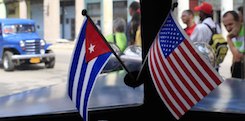
“Things happened quite quickly,” said Paul Clyde, president of the William Davidson Institute (WDI) at the University of Michigan, who lived in Slovakia in 1993 and served as an economic adviser to the Czech and Slovak governments. “The structure that had been in place for all those years suddenly was not there anymore. It was sudden change.”
WDI got its start in the wake of the fall of communism and its primary mission in those early years was to help countries make the economic transition through a program of instruction, faculty and student development, and research. And while the communist economic system was undergoing earth shattering changes in Eastern Europe, the aftershocks were felt all the way across the Atlantic on the island nation of Cuba. Suddenly, Cuba lost its main trading partners (82 percent of Cuban exports went to Soviet bloc countries; 85 percent of its imports came from these same countries) and the financier of annual, multi-billion dollar subsidies ($6 billion in 1989 alone). Some pundits predicted Fidel Castro would follow the lead of his Soviet counterparts and embrace a capitalist economy, but the Cuban leader instead stuck to his Cold War ways.
Now several decades later, as the frosty relations between the U.S. and Cuba begin to thaw in the wake of President Obama’s historic visit to Havana in March, experts are once again speculating on how arguably the last vestige of the old Soviet communist system will react economically. Will Cuba be like the Soviet bloc transition of the early 1990s – rapid and at times disorderly? Or more like recent examples of China and Vietnam, with an open economy but a strong central government still playing an integral part?
Clyde said when the Soviet bloc countries collapsed and a free market system was introduced, there had been no experience like it before, nothing to refer to, no guide on how to go about transitioning from a command to a market economy. For Cuba there are guideposts, though no two experiences are going to be alike, Clyde warned. China’s transition was different than the Soviet Union, which was different from Vietnam.
“But at least you have something in the same ballpark to draw on, to have some idea of how it might go,” he said. “Cuba has a number of benefits too. Like the Soviet bloc countries, Cuba has infrastructure and a well-educated population. Unlike the Soviet bloc countries Cuba is very close to the U.S. as a major trading partner. And it’s far from a landlocked country. When you look at Eastern Europe back in the early 1990s, many countries did not have trading partners next to them that were potentially beneficial. Most of their neighbors were in the same boat.”
Soon after its founding, WDI concentrated on the economic transition in Central and Eastern Europe. The Institute focused on three major efforts: delivering annual, six-week seminars for senior business leaders, entrepreneurs and government officials from countries with economies in transition; providing internships that allowed U-M students to work in Poland and the former Soviet republics; and, funding fellowships that allowed U-M scholars to engage intensively on the ground.
In May, Amy Gillett, vice president of WDI’s Education Initiative, and Diana Paez-Cook, senior program manager of the institute’s Development Consulting Services, will travel to Cuba to explore entrepreneurship training opportunities.
Gillett, who has a master’s degree in Russian and Eastern European Studies and did government and business work on the ground in the region from 1991-1997, said she sees many parallels between the economic transition in the Soviet bloc countries and Cuba.
“Many of the skills required by those in the former Soviet Union to aid in their economic transition are the same as what will be required by those in Cuba,” Gillett said.
Eric Leenson, founder and president of California-based SOL2 Economics and coordinator of the international project, “Socially Responsible Enterprise and Local Development in Cuba,” said the economic transformation there “needs to be looked at as uniquely Cuban.”
Leenson said the process of economic change began years ago and won’t be driven by recent, renewed relations with the U.S. He said Cuba began about seven years ago altering its economic structure in a number of ways, including wanting to lower the percentage of employees of state-run enterprises from 95 percent to about 55 percent. The government also wants to attract more foreign investment. But it remains steadfast that any new economic system still be centralized.
“What is being talked about is prosperous, sustainable socialism,” Leenson said. “Cuba is not giving up on socialism, so that makes it different from Eastern Europe. They want to maintain a strong state. They will not open up their economy willy nilly. The state is quite competent and is looking out for its own interests.”
Already, 13 U.S. airlines have applied to provide direct flights to Havana, and U.S.-based Starwood Hotels announced it would manage several hotels owned by the Cuban government. Beginning in May, the cruise line Carnival will set sail for Cuba, and Google wants to expand internet access in the country.
While President Barack Obama was meeting with Cuban officials in Havana in March, PayPal executives were in discussions with government officials about an online remittance service for the island, and singer Jimmy Buffett mingled with U.S. representatives on the trip about bringing his Margaritaville restaurant chain there.
Mel Levitsky, professor of international policy and practice at the University of Michigan’s Ford School of Public Policy and a former U.S. ambassador to Bulgaria and Brazil, said Cuba’s transition will be quicker if the old leadership of Raul Castro leaves (Castro said he’ll hand over the presidency in 2018) and a young generation of entrepreneurs push for change. Still, he sees a slow, 10-year transition at least.
This would be similar to the transition in Central and Eastern Europe. In fact, citizens in the former Soviet Bloc were unhappy when their countries did not have GDPs similar to the U.S. after 12 months. Most were shocked to hear it could take a generation before the economic transition would take hold.
Sir Fazle Hasan Abed was recently on the University of Michigan campus to receive a global health award. While there, he sat down with Kyle Poplin, editor for NextBillion Healthcare, an initiative of WDI, to talk about his work in Bangladesh. This article was originally published April 13, 2016 on NextBillion.
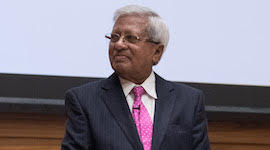
It was 1972 and Bangladesh was “an international basket case.” The Liberation War had just ended and the country was still reeling from the deadliest tropical cyclone ever recorded, Bhola, two years before.
The desperate conditions in his native country convinced Fazle Hasan Abed to quit his executive job at Shell Oil and try to help. But he couldn’t have foreseen the impact he would have on Bangladesh – and the world – when he founded what was originally a short-term relief effort called the Bangladesh Rural Advancement Committee.
That original group of a couple dozen people grew into what is now called BRAC, the largest non-governmental development organization in the world, with a $1 billion budget and 111,000 employees offering services to 138 million people. And Bangladesh, not coincidentally, has transitioned from the world’s second poorest country to lower middle income.
BRAC’s overarching philosophy is that poverty has many causes, so many solutions are needed. The organization provides programs in microfinance, education, health care, job training, empowerment of women, sanitation, agriculture, etc., and owns 16 social enterprises that provide $700 million in revenue. The remaining $300 million in revenue is generated through donations.
Abed – now officially Sir Fazle after being knighted by Queen Elizabeth II – has been called one of the world’s 50 greatest leaders, and was hailed as “a public health hero” when the University of Michigan awarded him one of its most prestigious honors, the Thomas Francis Jr. Medal in Global Public Health, on April 6.
The next day, in a sit-down interview with NextBillion, the 80-year-old talked about his four-decades-and-counting quest to empower the poor.
“The greatest influence on me about people’s lives and poverty was my mother. She was very concerned about poverty and poor people and she tried to help them as much as she could,” he said. “(After starting BRAC) I got to know poverty firsthand in the villages of Bangladesh. I became more aware of the multidimensional aspect of poverty. It’s not just lack of income, it’s lack of opportunities, lack of health care, lack of education. It’s all kinds of deprivation that constitutes poverty. Ultimately, it’s also powerlessness to do something about poverty, how to come out of it.
“In the old days, one used to think that one takes resources to the poor people and distributes them, and they come out of poverty. But we thought you have to involve the poor people themselves in the fight against poverty.”
He said he developed that concept – considered revolutionary in the ’70s – from reading “Pedagogy of the Oppressed” by Brazilian educator Paulo Freire. “Oppressed people have got their own way of thinking about life,” Abed said, “and if you can somehow mobilize them, make them critically aware of their own condition, and get them to act on their own behalf, make them an actor in their own history, then things become much easier.”
Perhaps the best example of Abed and BRAC putting that idea into practice was an oral rehydration therapy (ORT) program aimed at ultra-poor women in Bangladesh starting in the early 1980s. Diarrheal disease, the second leading cause of death in children under age 5, leads to dehydration, but it can treated with a simple mixture of water, sugar and salt known as ORT. Conventional wisdom held that illiterate, uneducated women were incapable of properly mixing and administering ORT, but BRAC taught millions of women from Bangladesh’s slums and villages how to do it. And today Bangladesh’s ORT rates are among the best in the world.
BRAC also pioneered a “graduation model” that empowers the ultra-poor to move from safety net programs to income-earning activities and self-sufficiency.
In the free-ranging video interview below, Abed talks more about BRAC’s future than its illustrious past.
He’s optimistic, for example, about the next generation of businesses that might help support BRAC, highlighted by a transition from a free to paid education model. He believes everyone can afford to pay $10 to $15 a month to ensure their children’s future, so BRAC is “looking into providing quality education for poor people.”
He’s wary of religious fundamentalism. The interview was conducted the day after a secular blogger was hacked to death in Bangladesh – the fourth such incident this year – in an attack attributed to a local chapter of al-Qaeda. Abed said that while “intolerant religion is becoming quite a force in our society,” it hasn’t yet had much of an impact on BRAC’s empowerment efforts, specifically of women, and he hopes such intolerance can be kept under control.
And he’s certain that it is, indeed, possible to eliminate extreme poverty worldwide, in accordance with Sustainable Development Goal No. 1. As one might expect, he’s got a plan in mind:
Note: This is one in an ongoing series of articles profiling past WDI interns and Multidisciplinary Action Project (MAP) team members and their career paths. Additional profiles in the series may be found here.
It was a trip to the Soviet Union for a student exchange program when Per Hong was a high school junior that sparked his lifelong interest and passion to work in that part of the world. So when he had narrowed his choices to three business schools for his MBA studies – the Wharton School at the University of Pennsylvania, Dartmouth College’s Tuck School of Business and the University of Michigan Business School (as it was known then) – he decided on Michigan because of WDI’s international student projects.
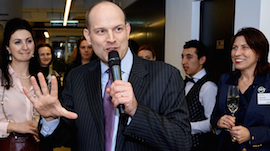
“It was the selling point for why I chose the University of Michigan,” said Hong, now a partner with A.T. Kearney and managing partner of the firm’s Moscow office. “The opportunity to spend time working in the region on student projects was a differentiator for me.”
Hong, who majored in Russian as an undergrad at Swarthmore College, got his first WDI student opportunity in summer 1995.
His WDI internship was with LET Aeronautics, a Czech Republic manufacturer of 18- and 32-passenger propeller aircraft that was in the process of privatizing after the collapse of the Soviet Union. They prided themselves on having a fleet of aircraft designed to land on unfinished runways in Siberia.
With the collapse of the Soviet market, they were left with nearly 40 aircraft and wanted to certify their planes so they could be sold in the West. Hong developed a marketing strategy for LET, including how it could sell its refurbished, durable aircraft in new, hard-to-reach markets like Latin America and Africa.
“It was fascinating to work in a brand new part of the world,” Hong said of his time in the Czech Republic. “This was a very old and proud company that was now having to suddenly reinvent itself. They were faced with real market economy issues related to how they dispose of three years of inventory, restructure to get profitable and rebrand themselves. It was an enriching experience to work with an indigenous company about to go global, and the challenges they faced at all levels in transitioning to a market mindset.”
During his second year of MBA studies, Hong was part of a WDI-sponsored International Multidisciplinary Action Project – or IMAP – team at the business school. He and his classmates worked on a market entry strategy for Whirlpool appliances in Russia. As part of the project, the team spent two weeks in Moscow and St. Petersburg surveying firsthand the developing retail landscape for washing machines in a country making its transition to a market economy.
“In contrast to my experience in the Czech Republic where I worked for a Czech company, in Russia I was working for a multinational seeking to enter a new market,” Hong said. “I gained a whole new perspective and appreciation for the specific kinds of challenges Western companies were facing in trying to adapt themselves to operate in these new transitional economies.”
He said working in the two countries was an “immense training ground at the time,” and immersing himself in different business cultures “profoundly shaped” him.
Today, Hong has more than 20 years of consulting and industry experience in North America, Europe and Russia. Hong credits WDI and its student projects with sparking “a passion to serve clients in these markets that still shapes what I do today.”
“Without question, I’m pursuing my passion,” he said. “Today, while Russia’s political and economic climate is creating a whole new set of transitional challenges for companies in the region – in some ways not dissimilar to the volatility of the mid-90s – I still reflect on my early experiences with WDI. I like to think I offer both a unique insight and a passion to equip both my multinational and Russian clients with the means to compete and thrive in a global economy. WDI was core in launching me down this path.”
Speaker: Joshua Kaufman, Director, Office of Evaluation & Impact Assessment, USAID US Global Development Lab
Today, the global development landscape is facing unprecedented, accelerated change. Driven by historic shifts in capital flows, technological breakthroughs, a new culture of innovation and social entrepreneurship, and massive acceleration of connectivity, this change presents tremendous opportunity to help the seven hundred million people who still live on less than $1.90 a day lift themselves out of extreme poverty. However, this opportunity can only be realized if traditional development organizations are willing to embrace radically new approaches to how we do business.
The U.S. Global Development Lab, established in April 2014, builds on USAID’s 50 years of experience by applying science, technology, innovation, and partnerships to accelerate impact in response to global development challenges. The Lab’s focus is twofold:
Speaker: Madison Ayer, Executive Chairman, Honey Care Africa Chairman & Co-Founder, Farm Shop.
Supply chains integrating low-income producers and consumers are subject to unique challenges – poor infrastructure, security concerns, informal regulations, and high costs are just a sample of factors. Yet overcoming these barriers can lead to long-term competitive advantage and positive economic impact on communities across the supply chain.
WDI has successfully completed four years of work in the Ukraine on a project to bring public-private partnerships to the country and open the door to private sector participation in infrastructure and public service delivery – including health and education.
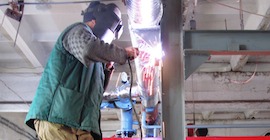
WDI partnered with FHI360, a major Washington, D.C. consulting firm, on the USAID-funded program to promote the use of public-private partnerships. A primary goal for the Public-Private Partnership Development Program in Ukraine (P3DP) was to build the capacity of the Ministry of Economic Development and Trade (MoEDT) to establish a national-level initiative to create partnerships by bringing together government and private sector interests.
During the four years of work, WDI provided senior-level advice to numerous Ukrainian government and private sector organizations on PPP-related issues, including policy, legislation, and investment projects. This was done in several workshops, seminars and conferences throughout the region.
WDI also was instrumental in launching the PPP and Infrastructure Expert Center (PIEC), which is based at the American Chamber of Commerce in Kiev, and serves as a platform for businesses and other stakeholders to advocate for reforms that improve the environment for PPP and investment into infrastructure.
Ukraine’s first biofuel heating public-private partnership was established in the northern town of Malyn, thanks in part to the efforts of WDI. Ukraine historically has been dependent on natural gas imports from Russia for heating. However, gas supplies have been threatened by armed conflict and ongoing price disputes, sparking increased interest in energy efficiency and alternative fuels.
WDI helped put together a well-structured PPP that attracted the private sector financing, technology, and management expertise necessary for infrastructure and public service projects.
WDI consultant David Lawrence served as senior technical assistance coordinator for the final two years of the project, from 2013- 2015. Lawrence was responsible for supporting P3DP’s communications, building donor and private sector relations, and providing technical input and general guidance to the P3DP, among other things.
(This article originally appeared in Ross Thought In Action and has been republished with permission.)
Michigan Ross Professors outline a cost-based evaluation to optimize how private money is used for social ventures.
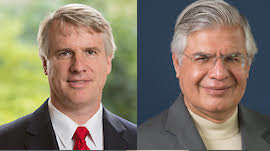
Private money that goes to poverty fighting ventures often does so under a number of catchphrases — patient capital, impact investing, social enterprise, social capital, and others.
But those terms help muddle how these ventures actually work and ultimately hinder poverty alleviation, say Michigan Ross Professors Paul Clyde and Aneel Karnani. It’s an understanding they’d like to clear up, because the prospects of reducing poverty have never been better, thanks in part to private-sector interest.
Their latest research is a way for investors and donors to better understand whether it has to sacrifice some profits in a social venture and, if so, to what extent. They argue this clarity is needed because delivering products and services to the world’s poor often involves a subsidy.
But where that subsidy lies is a key question.
“Most people understand that social entrepreneurship, or whatever term you use, involves some sort of subsidy,” says Karnani, professor of strategy. “But what’s not clear is the extent of it, or what would be the most effective way to subsidize. We take an approach that combines the logic of economics and accounting. Let’s not just throw around phrases.”
Their paper, “Improving Private Sector Impact on Poverty Alleviation: A Cost-Based Taxonomy,” was published in the California Management Review. (Subscription link.)
Ideally, private companies would be able to reduce poverty without sacrificing profits or offering a subsidy. A famous example is mobile phones, where technological advances and innovative business models helped bring those devices to the world’s poor.
But Karnani and Clyde argue this is an exception. Other purely for-profit ventures serving the world’s poor have had trouble reaching scale.
“We’re not taking a position on what donors and investors should or shouldn’t do,” says Clyde, Tom Lantos Professor of Business Administration and president of the William Davidson Institute. “But let’s lay some groundwork to describe what’s really going on. All these buzzwords tend to shove things under the rug, which can lead people to make suboptimal decisions.”
Clyde and Karnani outline four main subsidies common to ventures serving the poor, and the benefits of drawbacks of each:
“Our goal is to help investors and donors clarify the cost structure,” says Karnani. “It applies to donors, investors, policy makers, everyone who talks about social entrepreneurship, which itself is kind of a vague phrase. It’s useful for anyone trying to solve this serious problem. Let’s just be clear about the extent of subsidy.”